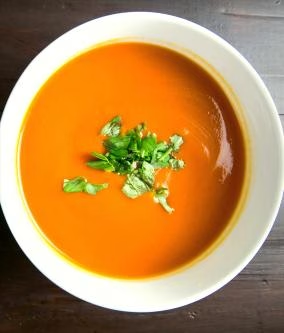Thickening is a classic Chinese cooking technique. While delicious, some consider it unhealthy. There’s also talk of cornstarch, used for thickening, being toxic. Are there other ingredients I can use to thicken my soup?
What is thickening?
When making soup, we often add cornstarch and cold water to make a thickening sauce before removing it from the heat. Pour this sauce over the soup and stir it a few times. This creates a thick, slow-flowing, broth-like consistency.
Thickening is a classic Chinese cooking technique, but is it inherently unhealthy?
Thickening is often done with cornstarch water, primarily taking advantage of the starch content of cornstarch. When thickening, the starch gelatinizes upon heating, thickening the liquid.
Cornstarch, made from cassava or potatoes, has a high amylopectin content, which helps increase viscosity and body. Depending on the amount of cornstarch added to a soup, soups can have varying thicknesses.
Though thickening can add texture and flavor to dishes, is it truly unhealthy? The main concern regarding thickening is that the slurry is high in calories, which can lead to increased calorie intake.
Is cornstarch toxic and unhealthy?
There’s also a myth that cornstarch is toxic. However, the cassava used in cornstarch contains trace amounts of toxic cyanic acid, but this cyanic acid is gradually reduced during the cornstarch production process.
The cyanic acid level is further reduced during cooking, so using cornstarch is not harmful.
From a caloric perspective, processed cornstarch contains approximately 340-360 calories per 100 grams. If you use a lot of starch for thickening or consuming a thick soup, and the dish you’re thickening is salty, sweet, or spicy, this can indeed increase your caloric burden.
For those concerned about calorie content and wanting a rich, rich broth, try these two lower-calorie ingredients. These ingredients are also readily available and can be substituted if necessary.
Method 1: Healthier: Substitute natural ingredients for thickening.
Yam
Yam is a staple food ingredient and a high-quality starch. It can also be used for thickening, but fresh yam is low in calories.
It contains approximately 87 calories per 100 grams. Raw yam contains natural mucilage, so grind it into a puree and add it directly to soups. Alternatively, blend yam and water in a blender at a 1:1 ratio to create a soup. This can be added as a thickener during the thickening process to thicken the dish.
White Fungus
Fresh white fungus is rich in gelatin, and when making sweet white fungus soup, you’ll notice a noticeable increase in thickness. Therefore, if you have some white fungus at home, you can use it as a thickener.
Chop the white fungus into small pieces and blend it in a blender at a 1:1 ratio to create a fungus juice. Add this to the thickening process.
If you’re using dried white fungus, remember to rinse and soak it until softened before blending it. If you want to thicken the soup while still enjoying the texture of white fungus, cut it into small pieces and add it to the broth to create the desired consistency.
Method 2: For convenience, search the refrigerator for two ingredients to thicken the sauce.
This method is suggested for ease of use.
White Rice/Leftover Rice
What if you’re suddenly out of cornstarch but need to thicken a sauce, but can’t go out to buy more? Using leftover rice is perfect.
Rice is a starchy ingredient and also helps create a thickening effect. Blend leftover rice with water in a blender at a ratio of 1:1-2 to make rice slurry. This can be used as a thickening sauce instead. It’s convenient and can alleviate the problem of having a small amount of leftover rice.
Bread/Toast
Thick soups and broths are often served with bread, and adding bread to them doesn’t feel strange. Toast or white bread can be used to thicken a soup to a desired consistency.
Cut the toast into strips, blend it in a food processor, and then add it to the soup. The starch will cook out during the cooking process, helping to thicken the soup. This method is especially useful when your soup isn’t thick enough, especially with Western-style soups.
Thickened soups have a rich and smooth texture, adding a richer texture. Many people love thickening, but if you’re concerned about the high calorie count, try using natural ingredients like yam or white fungus. As for rice and bread, these are also great alternatives to cornstarch for thickening.


Leave a Reply